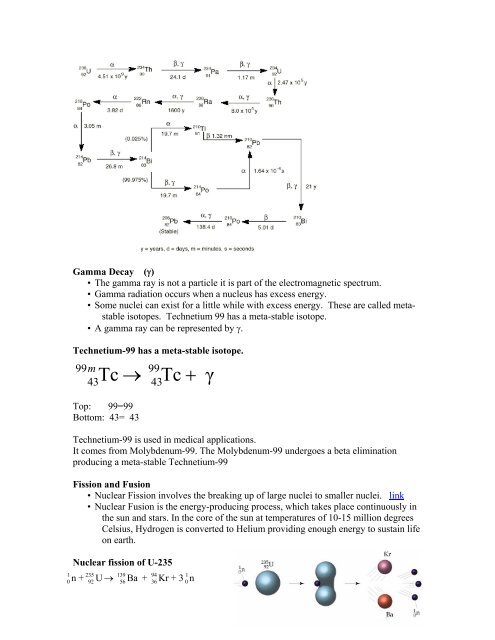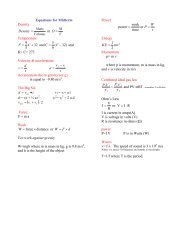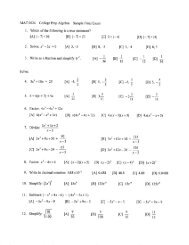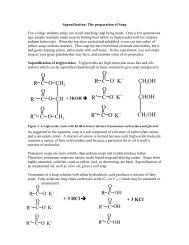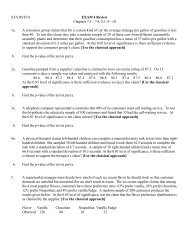PSC1341 Chapter 8 Nuclear Science A. The Nucleus B. Types of ...
PSC1341 Chapter 8 Nuclear Science A. The Nucleus B. Types of ...
PSC1341 Chapter 8 Nuclear Science A. The Nucleus B. Types of ...
Create successful ePaper yourself
Turn your PDF publications into a flip-book with our unique Google optimized e-Paper software.
Gamma Decay (γ)<br />
• <strong>The</strong> gamma ray is not a particle it is part <strong>of</strong> the electromagnetic spectrum.<br />
• Gamma radiation occurs when a nucleus has excess energy.<br />
• Some nuclei can exist for a little while with excess energy. <strong>The</strong>se are called metastable<br />
isotopes. Technetium 99 has a meta-stable isotope.<br />
• A gamma ray can be represented by γ.<br />
Technetium-99 has a meta-stable isotope.<br />
99m<br />
99<br />
43<br />
Tc →<br />
43Tc<br />
+ γ<br />
Top: 99=99<br />
Bottom: 43= 43<br />
Technetium-99 is used in medical applications.<br />
It comes from Molybdenum-99. <strong>The</strong> Molybdenum-99 undergoes a beta elimination<br />
producing a meta-stable Technetium-99<br />
Fission and Fusion<br />
• <strong>Nuclear</strong> Fission involves the breaking up <strong>of</strong> large nuclei to smaller nuclei. link<br />
• <strong>Nuclear</strong> Fusion is the energy-producing process, which takes place continuously in<br />
the sun and stars. In the core <strong>of</strong> the sun at temperatures <strong>of</strong> 10-15 million degrees<br />
Celsius, Hydrogen is converted to Helium providing enough energy to sustain life<br />
on earth.<br />
<strong>Nuclear</strong> fission <strong>of</strong> U-235<br />
1 235 139 94<br />
0<br />
n +<br />
92<br />
U →<br />
56<br />
Ba +<br />
36<br />
Kr + 3 1 0<br />
n


